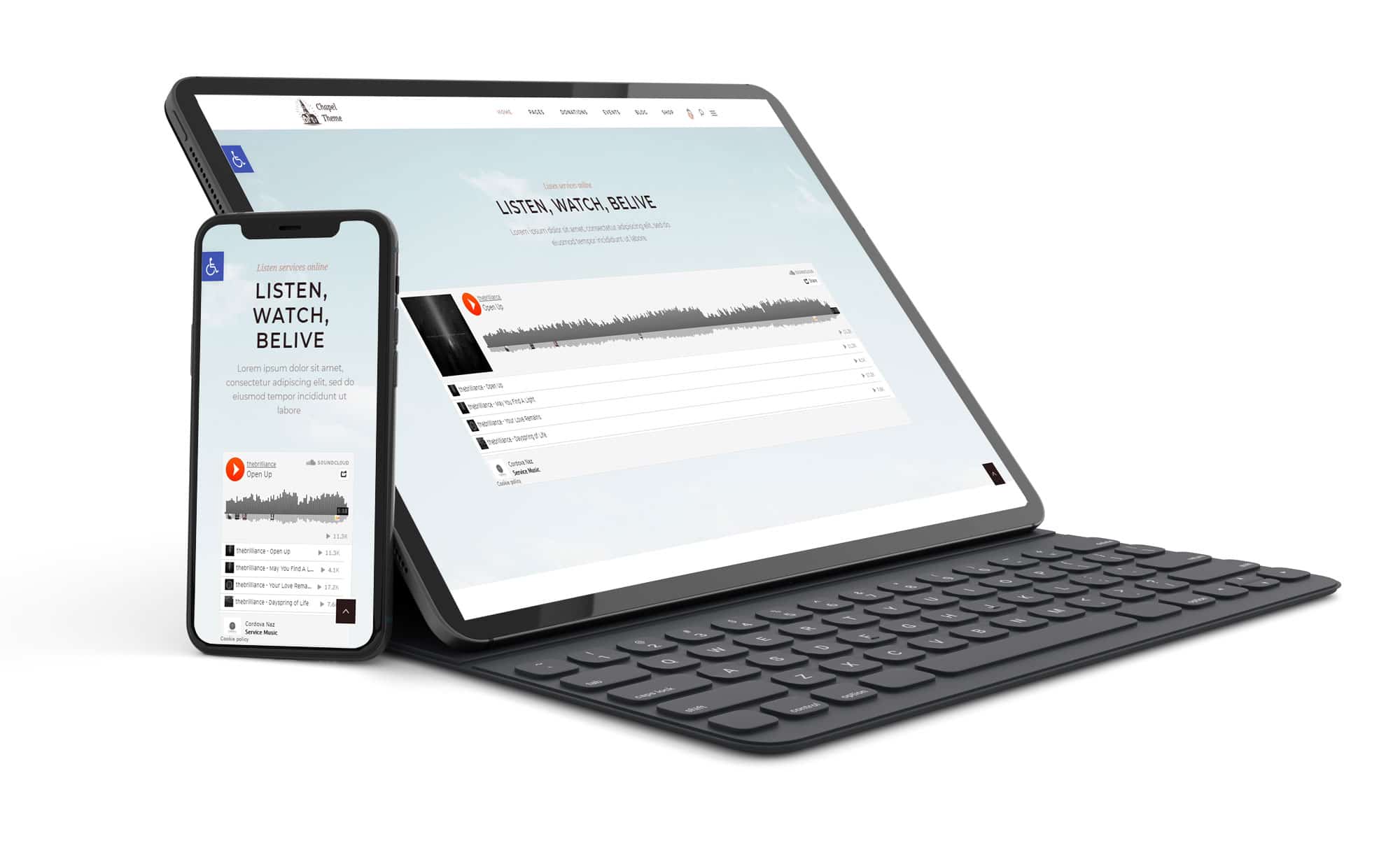
Unlocking the Power of Mobile: How to Create IOS and Android Apps from Your Website
- Mike
- February 10, 2024
- Uncategorized
- Create IOS and Android apps from your website
- 0 Comments
In today’s digital age, where smartphones have become an extension of ourselves, businesses must adapt and tap into the power of mobile. With millions of people using their phones for everything from social networking to online shopping, having a solid mobile presence can make or break your business. Now, Create IOS and Android apps from your website.
One effective way to harness the potential of mobile is by creating IOS and Android apps from your website. By doing so, you provide your users with a seamless experience and open up new avenues for engagement, revenue generation, and brand loyalty.
So get ready as we dive into this exciting journey of unlocking the power of mobile. Let’s turn your website into an app that users will love!
The Rise of Mobile and Its Impact on Businesses
Mobile devices have become an integral part of our lives in today’s digital landscape. We rely on them for communication, entertainment, and even conducting business. The rise of mobile technology has had a profound impact on businesses across industries.
With smartphones in the hands of nearly everyone these days, businesses must adapt to meet their customers’ changing needs and preferences. Mobile apps provide a convenient way for consumers to access information and engage with brands anytime, anywhere.
Mobile apps offer several advantages over traditional websites. They provide a more personalized and user-friendly experience by utilizing features like push notifications, location-based services, and seamless integration with device functions such as cameras or GPS.
Furthermore, mobile apps allow businesses to stay connected with their audience through constant engagement opportunities. With push notifications or in-app messages, you can easily reach out to users and keep them informed about new products or special offers.
Moreover, having a mobile app can significantly enhance customer loyalty. Providing valuable features within the app such as exclusive discounts or rewards programs creates incentives for users to stick around and continue engaging with your brand.
The rise of mobile technology has transformed the way businesses operate. To stay ahead in today’s competitive market landscape, you must embrace this shift towards mobile-centric strategies, including creating iOS and Android apps from your website.
Understanding the Differences Between IOS and Android Apps
When creating mobile apps, one of the essential decisions you’ll need to make is whether to develop for iOS or Android. Both platforms offer unique benefits and considerations, so understanding their differences is crucial.
Let’s talk about the user base. iOS has a large following worldwide, particularly in developed countries like the United States. On the other hand, Android dominates the global market share due to its availability on various devices.
Next up is design and user experience. While both platforms prioritize usability, there are some key distinctions. iOS tends to have a more uniform look and feel across devices since Apple manufactures both hardware and software components. In contrast, Android offers greater flexibility for customization but can lead to inconsistencies across different device models.
Development tools also vary between iOS and Android. Developers use Xcode with Swift or Objective-C programming languages to build an app on Apple’s platform. In comparison, Android development utilizes Java or Kotlin and popular IDEs like Android Studio.
App store distribution is another significant difference worth considering. Getting your app onto Apple’s App Store involves strict guidelines and rigorous approval processes that ensure quality control but may cause delays in publishing updates or new features. Meanwhile, Google Play Store follows a more open approach that allows faster deployment but may increase competition from less curated content.
Monetization strategies differ between iOS and Android apps as well. Due to its affluent user base, iOS users tend to spend more money on paid apps or make in-app purchases than their Android counterparts, where free apps dominate revenue generation through ads or freemium models.
Benefits of Creating an App from Your Website
In today’s digital age, having a solid online presence is crucial for businesses to stay competitive. With the rise of mobile devices, optimizing your website for mobile users has become even more critical. But why stop there? By creating an app from your website, you can unlock a whole new level of engagement and convenience for your customers.
One significant benefit of having an app is increased visibility. When users download your app, it stays on their device’s home screen, constantly reminding them of your brand. This can lead to increased customer loyalty and repeat business.
Another advantage is improved user experience. Apps are designed specifically for mobile devices, offering a seamless and intuitive interface that enhances navigation and functionality. Users can easily access features like push notifications, location services, and offline capabilities – all tailored to improve their overall experience with your brand.
Furthermore, apps allow for personalized interactions with customers. Through user profiles or login systems within the app, you can collect valuable data about their preferences and behavior patterns. This enables you to deliver targeted content and offers based on individual interests – resulting in higher conversion rates.
In conclusion, by creating an IOS and Android app from your website, you can amplify the reach and impact of your brand. The benefits include increased visibility, improved user experience, personalized customer interactions, enhanced performance, and potential monetization opportunities. Take advantage of tapping into this powerful tool that will keep you one step ahead of your competition in our mobile-first world.
Step-by-Step Guide to Building an IOS and Android App from Your Website
Building an iOS and Android app from your website may seem daunting, but it can be straightforward with the proper steps. Here’s a step-by-step guide to help you unlock the power of mobile and create apps that will elevate your business.
1. Research and Planning: Before diving into app development, take the time to research your target audience and competitors. Understand their needs and preferences to ensure your app meets their expectations.
2. Choose the Right Platform: Decide whether you want to build separate apps for iOS and Android or use cross-platform development tools like React Native or Flutter.
3. Define App Features: Based on user requirements, identify the key features you want in your app. Keep them simple yet impactful to provide a seamless user experience.
4. Wireframing and Designing: Create wireframes that outline the layout, navigation, buttons, and overall flow of your app. Focus on intuitive design principles to make navigation effortless for users.
5. Development Process: Hire experienced developers or use DIY platforms like WordPress or Wix Mobile App Builder if you prefer a more hands-on approach.
6. Testing Phase: Thoroughly test your app across various devices and operating systems before launch to ensure smooth functionality without glitches.
7. Submission & Launch: Submitting your app for review on the Apple App Store (for IOS) or Google Play Store (for Android) is essential for making it available to users worldwide.
8. Maintenance & Updates: Regularly update your app by fixing bugs, adding new features based on user feedback, ensuring up-to-date security measures, etc., enhancing its performance over time.
Creating an IOS and Android app from scratch requires careful planning, attention to detail, and testing phases.
Success in building a practical mobile application lies in understanding and implementing these processes effectively while constantly adapting to market trends.
Best Practices for Designing a User-Friendly App
When designing a user-friendly app, developers should follow several best practices. First and foremost, simplicity is vital. Users want an app that is intuitive and easy to navigate, so be sure to streamline the design and eliminate any unnecessary clutter.
Another important aspect of app design is responsiveness. Your app should run smoothly on various devices and screen sizes, from smartphones to tablets. Test your app thoroughly on different platforms to ensure a seamless user experience.
Navigation within the app should be clear and straightforward. Use familiar icons or labels for buttons and menu items, making it easy for users to understand how to move around the app.
In addition, consider incorporating gestures into your mobile app design. Swiping left or right, pinching, or zooming can enhance the overall user experience by providing more interactive elements.
Visual appeal also plays a crucial role in creating a user-friendly app. Use consistent branding elements like colors, fonts, and imagery throughout your app’s interface to create a cohesive look and feel.
Remember performance optimization. Slow loading times can quickly frustrate users; optimizing image size and reducing unnecessary animations will help improve overall speed.
By implementing these best practices when designing your mobile apps from websites, you’ll ensure that users have an enjoyable experience while using them!
Remember that building an IOS and Android app from your website doesn’t just end at development; promotion is crucial in ensuring its success among mobile users. By implementing effective marketing strategies tailored specifically for apps while continuously monitoring performance data, you can unlock the full potential of mobile technology for your business.
So go ahead – take advantage of this powerful tool! Please create your own IOS and Android app from your website and promote it to the world.


